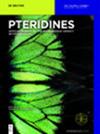Association between plasma total homocysteine (tHcy) and strokes: A meta-analysis
IF 0.9
4区 医学
Q4 BIOCHEMISTRY & MOLECULAR BIOLOGY
引用次数: 0
Abstract
Abstract Objective Inconsistent findings have been reported regarding the association between elevated plasma total homocysteine (tHcy) and the risk of different types of strokes. We conducted this meta-analysis to identify the association between tHcy and different kinds of strokes or recurrences of strokes, and provide evidence for preventing. Methods Relevant studies published before May 1, 2022 in databases such as PubMed, EMBASE, the Cochrane Library, CNKI, and Wanfang were retrieved. Two researchers independently searched and extracted the data, and used Stata 16.0 statistical software for analysis. Results were presented as the odds risk (OR) and the corresponding 95% confidence intervals (CI). Results In total, 24 articles were included, involving 51,426 subjects, of which 4,983 had stroke events during follow-up. Relative to lower tHcy, higher tHcy were associated with increased stroke (OR = 1.95, 95% CI: 1.59–2.37), ischemic stroke (OR = 1.71, 95% CI: 1.39–2.11), hemorrhagic stroke (OR = 1.99, 95% CI: 1.03–3.84), and recurrent stroke (OR = 1.25, 95% CI: 1.12–1.39), respectively. Conclusions This study shows that elevated tHcy increases the risk of stroke, including ischemic stroke and hemorrhagic stroke, and is closely related to the recurrence of stroke. It is recommended to pay attention to the detection of tHcy in the management of stroke patients in the future, and take effective measures to prevent and delay the progression of stroke.血浆总同型半胱氨酸(tHcy)与中风的相关性:一项荟萃分析
摘要目的关于血浆总同型半胱氨酸(tHcy)升高与不同类型中风风险之间的关系,已有不一致的研究报告。我们进行了这项荟萃分析,以确定tHcy与不同类型的中风或中风复发之间的关系,并为预防提供证据。方法检索PubMed、EMBASE、Cochrane Library、CNKI、万方等数据库2022年5月1日前发表的相关研究。两名研究人员独立搜索并提取数据,并使用Stata 16.0统计软件进行分析。结果以比值风险(OR)和相应的95%置信区间(CI)表示。结果共纳入24篇文章,涉及51426名受试者,其中4983人在随访中发生了脑卒中事件。与较低tHcy相比,较高tHcy分别与卒中增加(OR=1.95,95%CI:1.59-2.37)、缺血性卒中(OR=1.71,95%CI:1.39-2.11)、出血性卒中(OR=1.99,95%CI:1.03-3.84)和复发性卒中(OR=1.25,95%CI:1.12-1.39)有关。结论tHcy升高会增加脑卒中的风险,包括缺血性脑卒中和出血性脑卒中,并与脑卒中的复发密切相关。建议今后在脑卒中患者的管理中注意tHcy的检测,采取有效措施预防和延缓脑卒中的进展。
本文章由计算机程序翻译,如有差异,请以英文原文为准。
求助全文
约1分钟内获得全文
求助全文
来源期刊

Pteridines
生物-生化与分子生物学
CiteScore
1.20
自引率
25.00%
发文量
6
审稿时长
>12 weeks
期刊介绍:
Pteridines is an open acess international quarterly journal dealing with all aspects of pteridine research. Pteridines are heterocyclic fused ring compounds involved in a wide range of biological functions from the color on butterfly wings to cofactors in enzyme catalysis to essential vitamins. Of the pteridines, 5,6,7,8-tetrahydrobiopterin is the necessary cofactor of several aromatic amino acid monoxygenases, the nitric oxide synthases and glyceryl ether monoxygenase (GEMO). Neopterin plays an essential role in the immune system and is an important biomarker in laboratory medicine for diseases such as HIV, cardiovascular disease, malignant tumors, among others.
Topics:
-Neopterin, dihydroneopterin, monapterin-
Biopterin, tetrahydrobiopterin-
Folates, antifolates, riboflavin-
Phenylalanine, tyrosine, phenylketonuria, serotonin, adrenalin, noradrenalin, L-DOPA, dopamine, related biogenic amines-
Phenylalanine hydroxylase, tyrosine hydroxylase, tryptophan hydroxylase, nitric oxide synthases (iNOS), alkylglycerol monooxygenase (AGMO), dihydropterin reductase, sepiapterin reductase-
Homocysteine, mediators of inflammation, redox systems, iron.
 求助内容:
求助内容: 应助结果提醒方式:
应助结果提醒方式:


